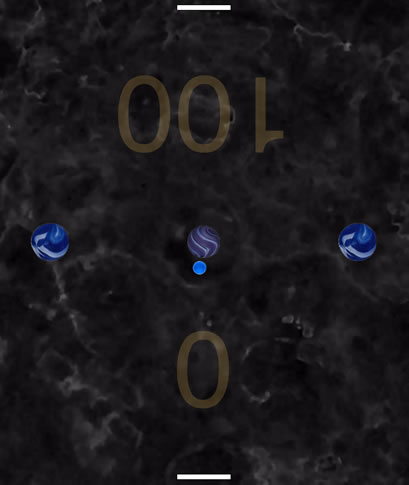…so it’s not exactly an “extreme” or “ultimate” game of pong, but the challenge led me to try some previously unexplored functions in p5.js. This version currently works only with touch screens and is sized specifically for an iPad air: http://blog.rich-path.com/p5/pong/ (p5 source code is available here)

Particularly interesting elements of developing the game for me were:
- Coding the scoring system. Points are gained by each player when the small light blue marble “ball” hits one of the 3 larger marbles in the center (based on the direction of the ball). The 2 outer targets are worth 10 points, the middle is worth 20. The numbers display the accumulated score for each player; however, if a player misses the ball with their paddle, they lose all of the points that they scored during that round (their score resets to that of the previous round). The target hit detection makes use of p5’s dist() function.
- Using the oscillators and envelopes in the p5.sound library. This example was particularly helpful in getting started with sound generation, though I by-passed the MIDI note conversion and am providing the oscillator with a specific frequency value. Also, to prevent an audible note from immediately playing at the start of the game, the oscillator is creating a super-low frequency of 1 Hz until a target is hit and a different tone is played…a bit of a hack until I come up with a better solution.
- Use of the built-in touches array to detect fingers on a touch screen. I found the short example sketch listed in the first response from lmccart on this page to be quite useful in figuring out how to track (and limit the number of) touches on a screen. The paddles and ball won’t move unless at least one finger is on either side.
- Changes in velocity depending on which part of the paddle hits the ball. Basically using a combination of the map() function and some hit-or-miss experimentation with calculations for this – the ball will move slower and more vertically straight when it hits the center of a paddle, and the angle and speed increases greatly towards the edges.